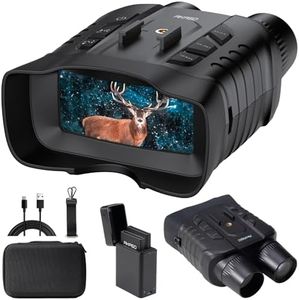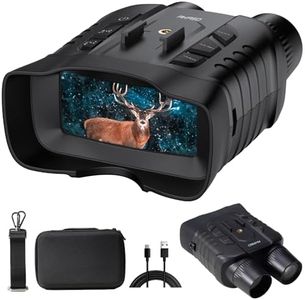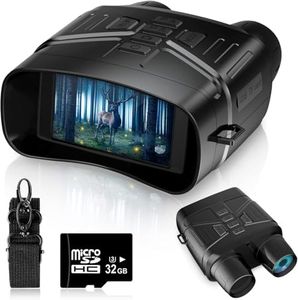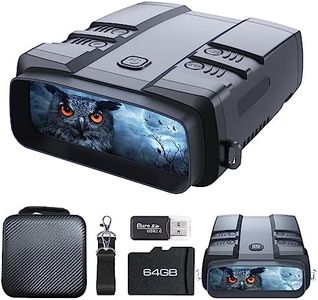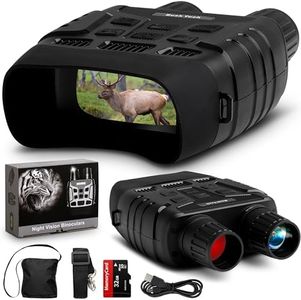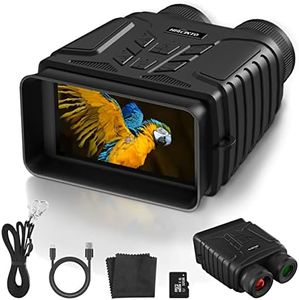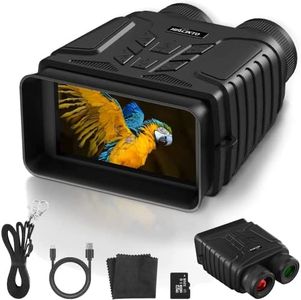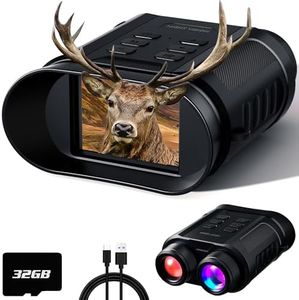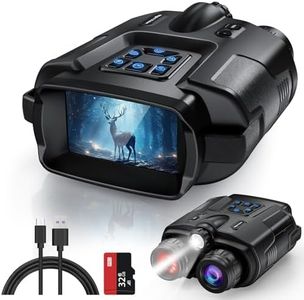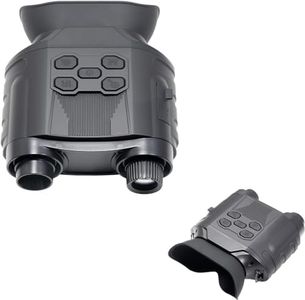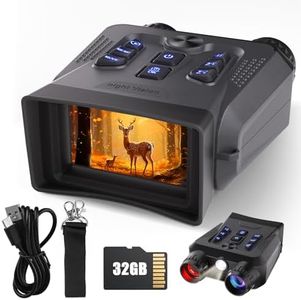We Use CookiesWe use cookies to enhance the security, performance,
functionality and for analytical and promotional activities. By continuing to browse this site you
are agreeing to our privacy policy
10 Best Night Vision Binoculars For Adults
From leading brands and best sellers available on the web.Buying Guide for the Best Night Vision Binoculars For Adults
Choosing the right night vision binoculars for adults can be a rewarding but sometimes tricky process. Night vision technology allows you to see in low-light or complete darkness by amplifying the available light. Whether you plan to use them for wildlife observation, camping, security, or navigation, understanding key features will help you make an informed choice that fits your needs and activities.Night Vision GenerationThe generation tells you about the level of night vision technology inside the binoculars. There are generally Gen 1, Gen 2, and Gen 3 (sometimes digital models are also classified separately). Gen 1 models use basic amplification and are suitable for casual users who need short-range viewing in mild darkness. Gen 2 offers improved image brightness and range for more serious activities or longer uses, while Gen 3 is reserved for users who need high performance, very clear images, and longer distances—often used by professionals. When picking, consider how sharp and clear you need the vision and the environments you'll be using them in.
Magnification PowerMagnification measures how much closer objects will appear through the binoculars. Low (2x to 4x) magnification gives you a wider view and works best for tracking moving objects or scanning a large area. Medium to high (5x to 8x or even higher) brings distant objects closer but makes it harder to keep images steady by hand, especially at night. Think about whether you want to scan the environment widely or focus in closely on specific targets. Choose lower magnification for a more stable view and higher for close-up detail, based on your intended use.
Objective Lens DiameterThis refers to the size of the lenses at the front of the binoculars, usually measured in millimeters. Larger lenses (like 40mm and above) let in more light, which helps create brighter images in the dark, but can make the binoculars heavier and bulkier. Smaller lenses make them lighter and more portable but limit how much you can see clearly in total darkness. If you need the best low-light performance and don't mind carrying a heavier device, go for larger lenses, otherwise, smaller ones may be enough for shorter or lighter use.
Infrared IlluminatorAn infrared (IR) illuminator acts like a flashlight that’s invisible to the human eye but boosts how well the binoculars can see in total darkness. Some models have built-in illuminators with adjustable brightness. If you expect to use your binoculars on moonless nights or in pitch-black environments, make sure they have a good IR illuminator. For situations with some ambient light, you might not need a powerful one. Consider how much 'true dark' you'll be facing when choosing this feature.
Viewing RangeThe viewing range is the maximum distance where you can see clearly using the binoculars at night. Shorter ranges (up to 100 meters) are usually fine for campgrounds or backyard use, while longer ranges (200 meters or more) are better if you want to scan fields, forests, or need to see across greater distances. Think about your activities: for hiking or close-up viewing, a shorter range is enough; for hunting or security, longer range is more important.
Ergonomics and WeightHow the binoculars feel in your hands and how much they weigh impacts how long you can use them comfortably. Heavier models may provide better performance but can cause fatigue or require a tripod for steady viewing. Lighter models are easier to carry but might sacrifice some performance or features. Reflect on how long you plan to hold them and whether you’ll be hiking or sitting in one spot during use.
Weather Resistance/DurabilityWeather resistance tells you if the binoculars can withstand rain, humidity, or dust. Durable models are built to survive drops and rough use, important for outdoor activities. If you plan to use them in tough environments or unpredictable weather, look for models labeled as water-resistant or ruggedized. For indoor or controlled settings, you may not need the extra durability.
